Abstract
Pigeons received food after completing a fixed ratio if the temporal properties of responding exceeded minimum duration requirements. In one set of conditions, a minimum time had to elapse before the first response of the ratio (the initial pause). In another set, the minimum duration was the time between the first and last response of the ratio. Obtained times increased as a power function of required times in both conditions. The power function resembled that occurring in experiments involving temporal differentiation of individual responses, interresponse times, latencies, and entire fixed-ratio sequences. Moreover, in all of these experiments individual performances could be described as a function of the base duration (the duration occurring in the absence of temporal requirements) and the specific time requirement. Control conditions indicated that the effects resulted from temporal requirements and not from reinforcer intermittency.
Keywords: fixed-ratio schedule, temporal differentiation, postreinforcement pause, run time, quantitative analysis, base duration, key peck, pigeons
Full text
PDF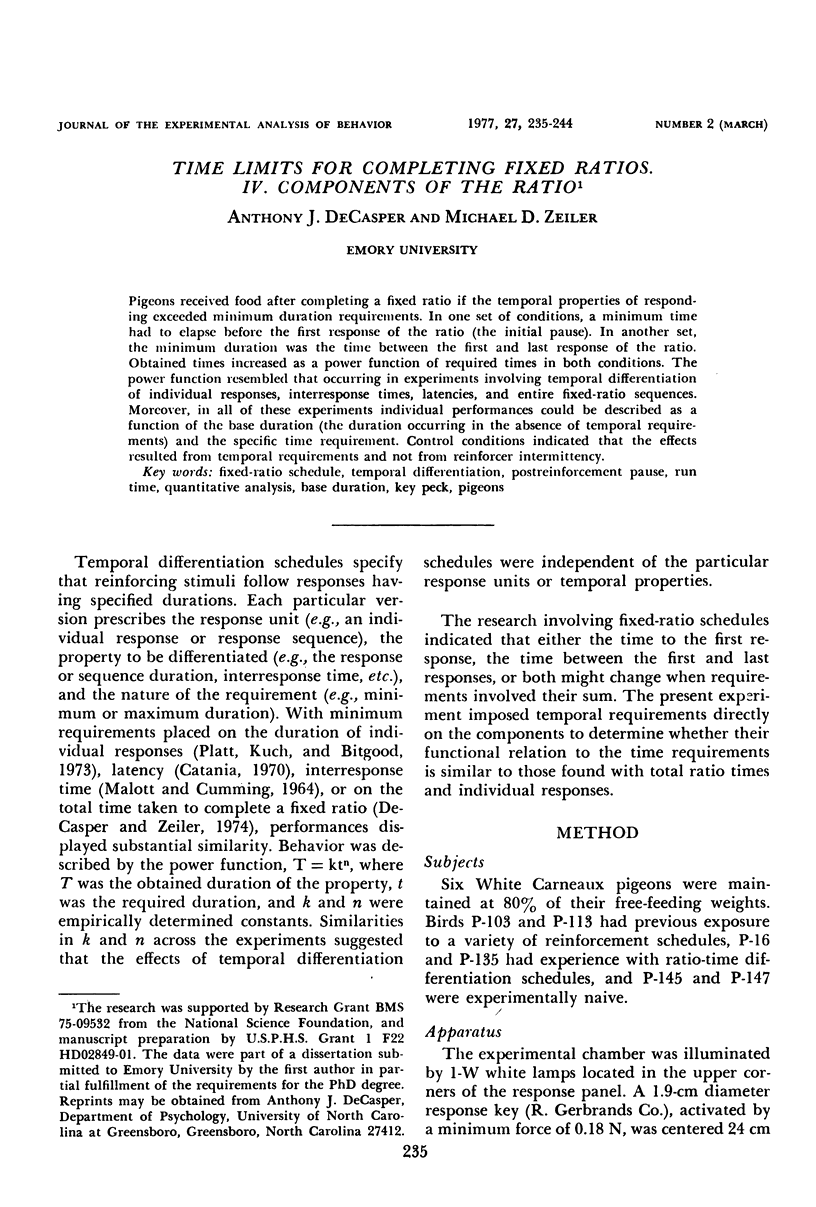
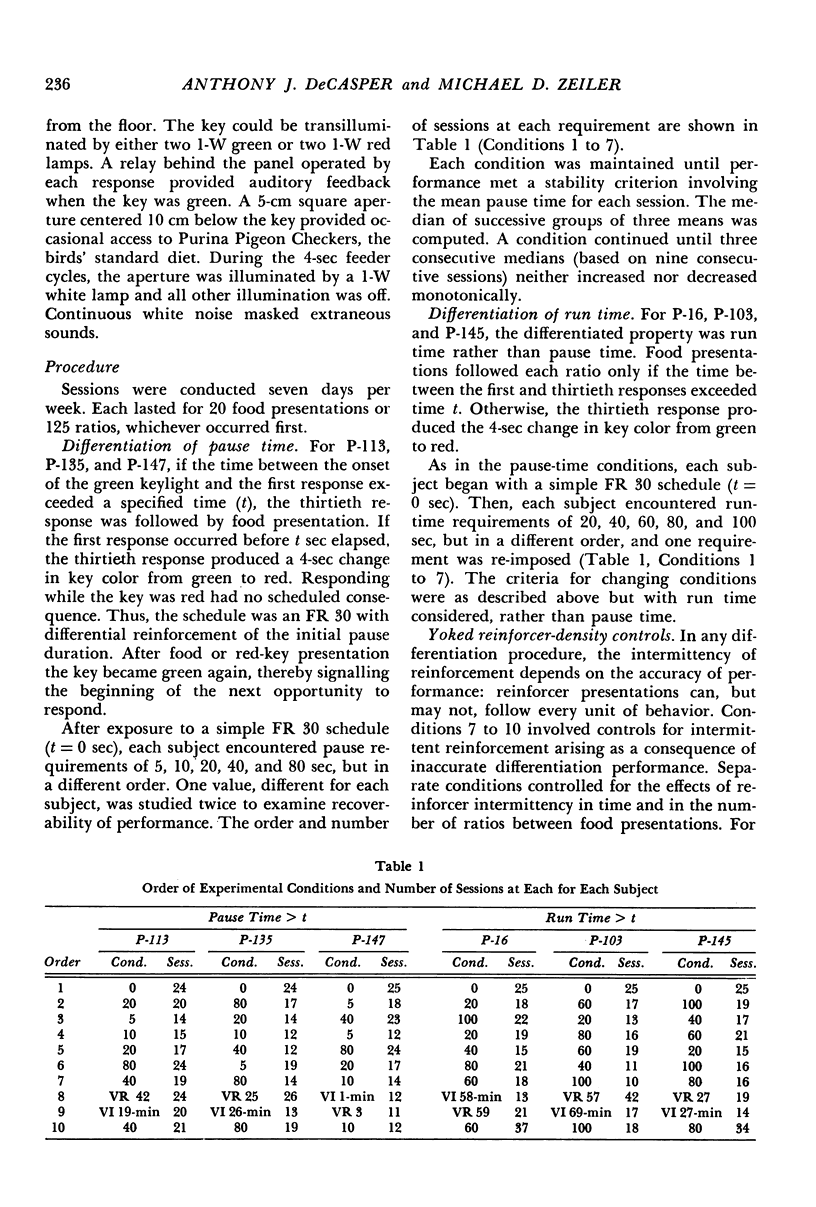


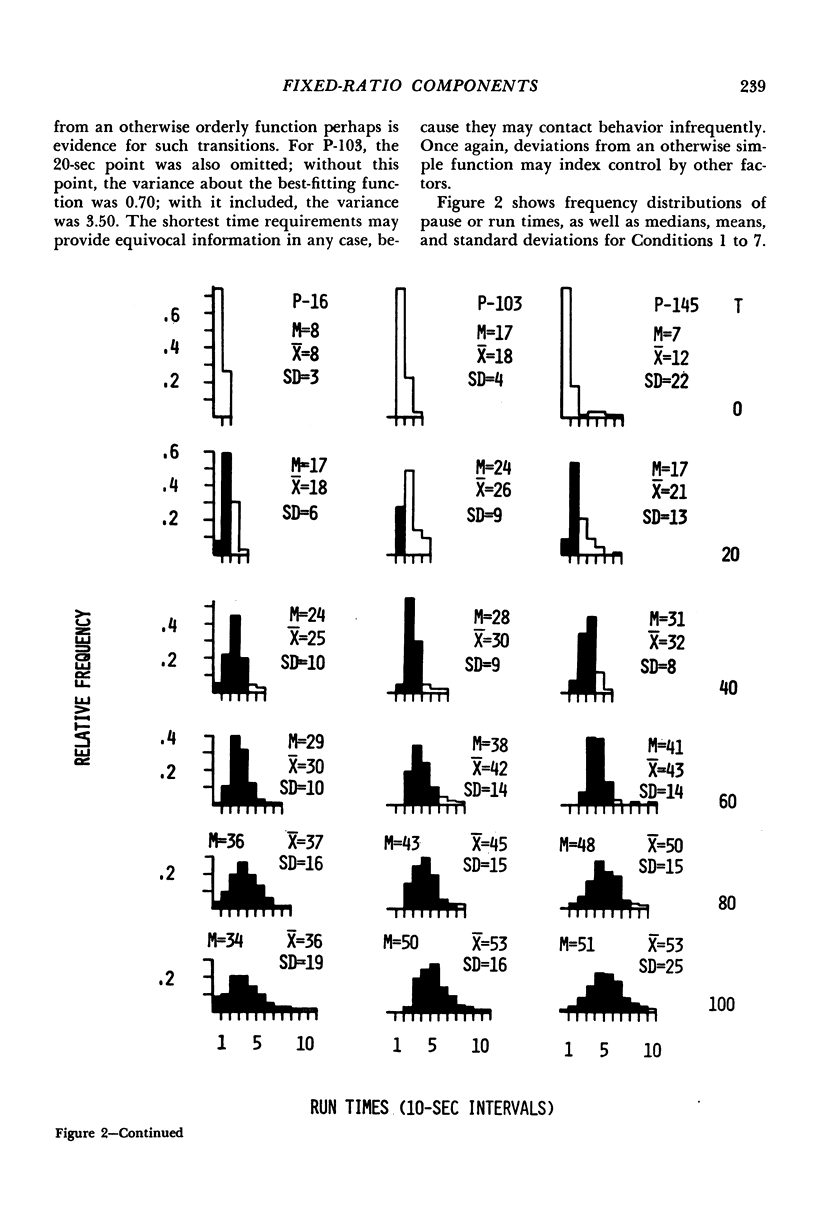
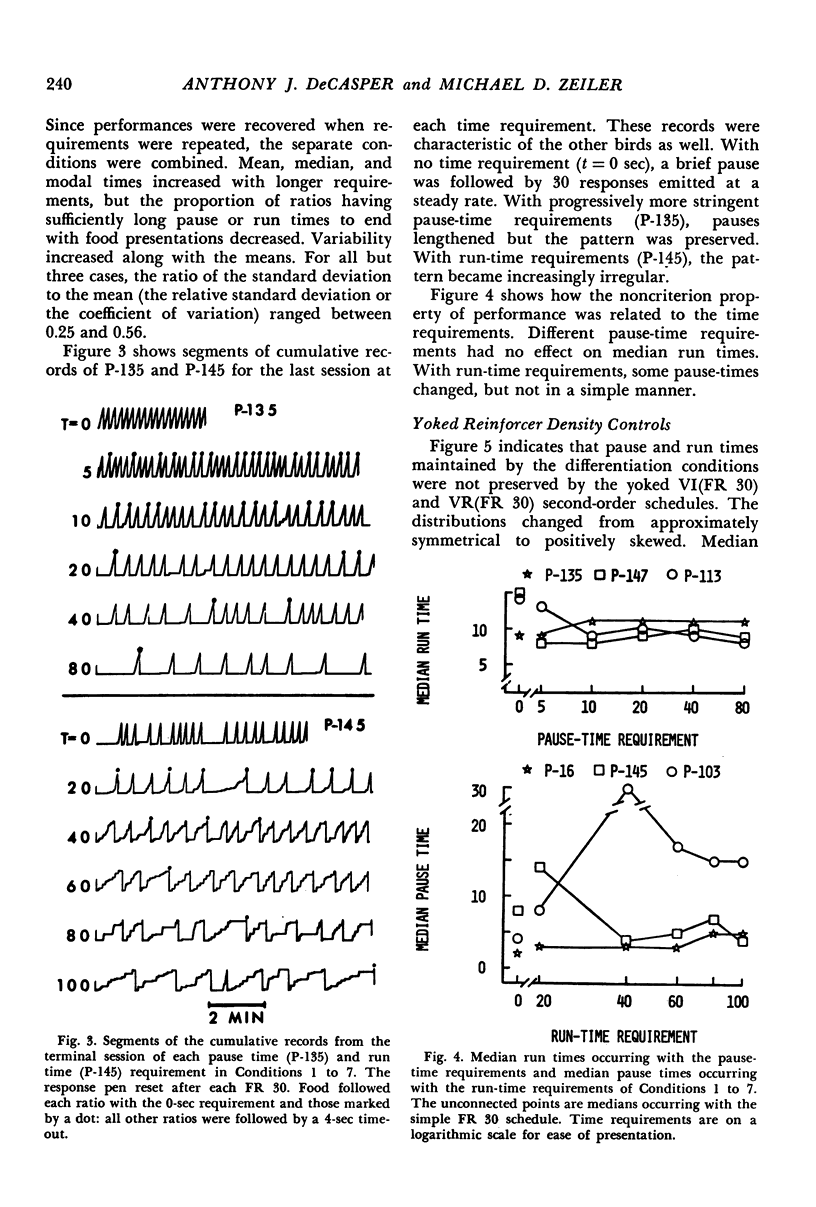


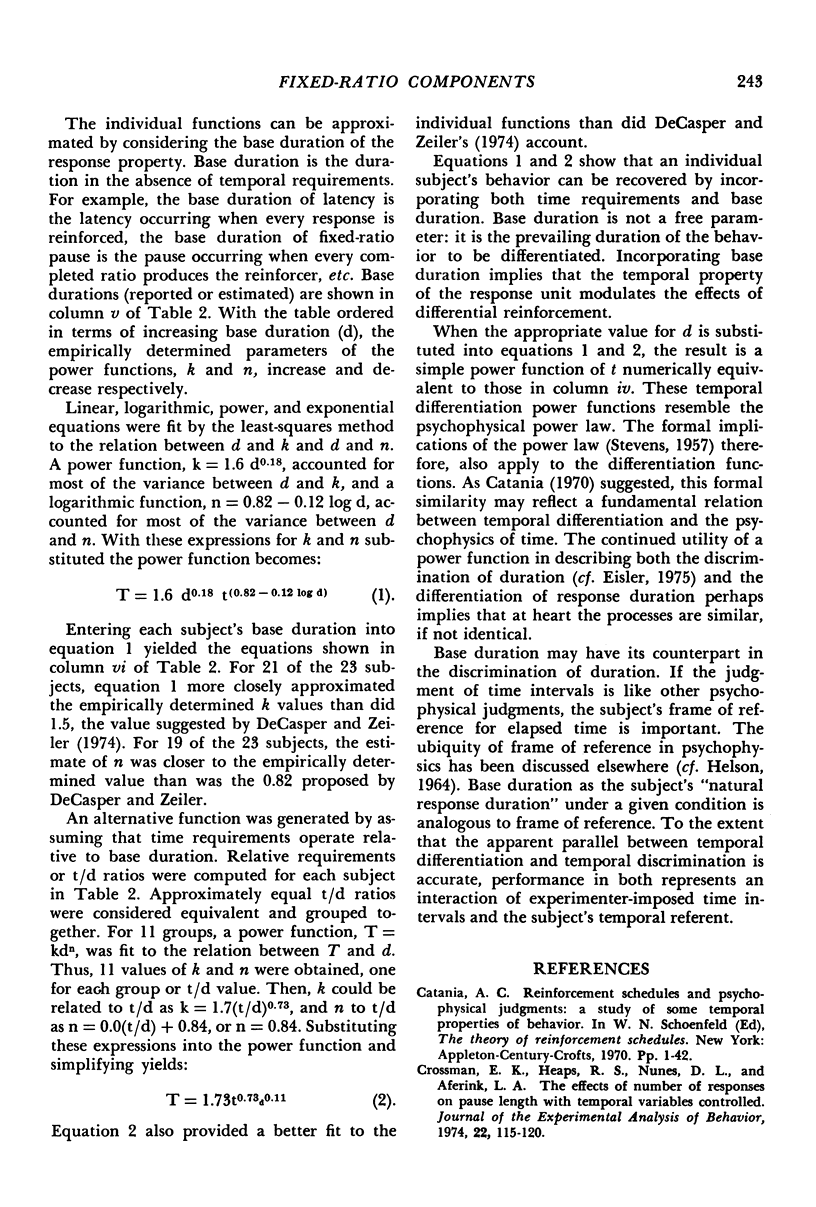
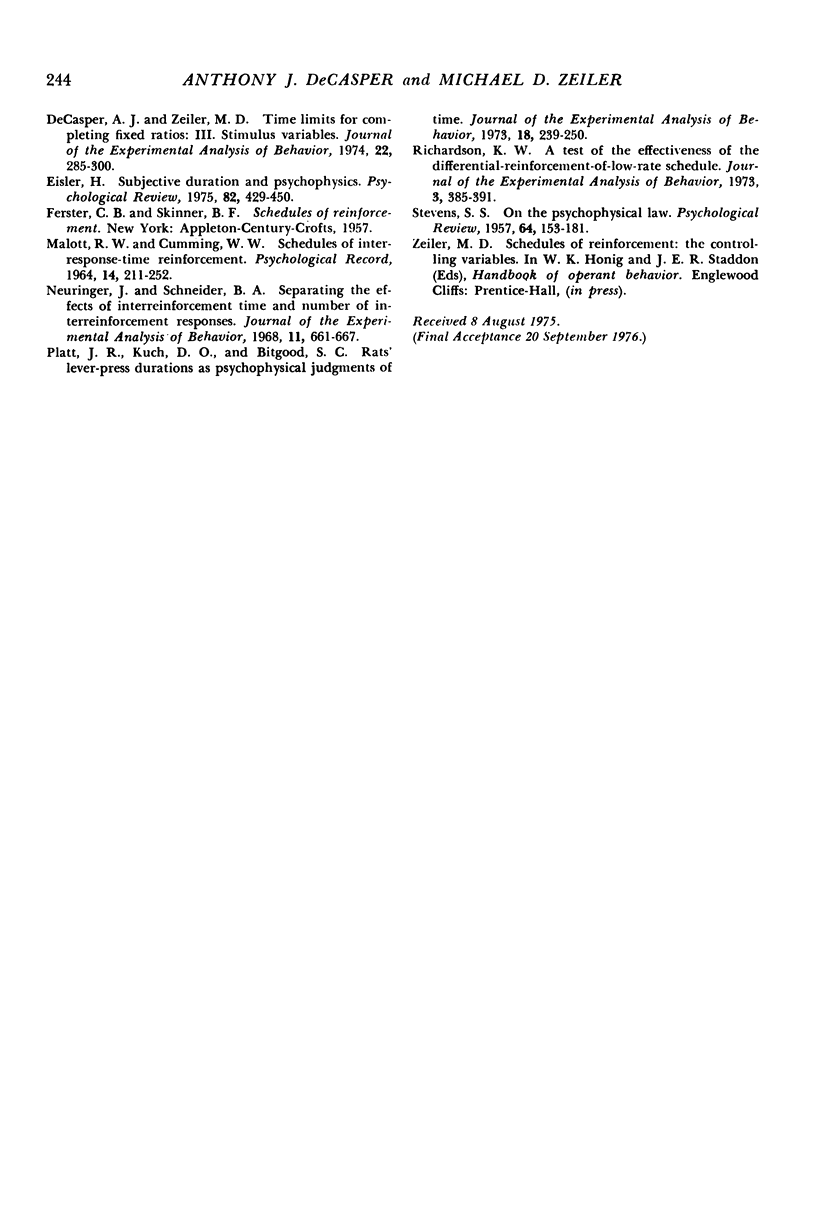
Selected References
These references are in PubMed. This may not be the complete list of references from this article.
- Crossman E. K., Heaps R. S., Nunes D. L., Alferink L. A. The effects of number of responses on pause length with temporal variables controlled. J Exp Anal Behav. 1974 Jul;22(1):115–120. doi: 10.1901/jeab.1974.22-115. [DOI] [PMC free article] [PubMed] [Google Scholar]
- Decasper A. J., Zeiler M. D. Time limits for completing fixed ratios. III. Stimulus variables. J Exp Anal Behav. 1974 Sep;22(2):285–300. doi: 10.1901/jeab.1974.22-285. [DOI] [PMC free article] [PubMed] [Google Scholar]
- Eisler H. Subjective duration and psychophysics. Psychol Rev. 1975 Nov;82(6):429–450. [PubMed] [Google Scholar]
- Neuringer A. J., Schneider B. A. Separating the effects of interreinforcement time and number of interreinforcement responses. J Exp Anal Behav. 1968 Nov;11(6):661–667. doi: 10.1901/jeab.1968.11-661. [DOI] [PMC free article] [PubMed] [Google Scholar]
- Platt J. R., Kuch D. O., Bitgood S. C. Rats' lever-press durations as psychophysical judgements of time. J Exp Anal Behav. 1973 Mar;19(2):239–250. doi: 10.1901/jeab.1973.19-239. [DOI] [PMC free article] [PubMed] [Google Scholar]
- Richardson W. K. A test of the effectiveness of the differential-reinforcement-of-low-rate schedule. J Exp Anal Behav. 1973 Nov;20(3):385–391. doi: 10.1901/jeab.1973.20-385. [DOI] [PMC free article] [PubMed] [Google Scholar]
- STEVENS S. S. On the psychophysical law. Psychol Rev. 1957 May;64(3):153–181. doi: 10.1037/h0046162. [DOI] [PubMed] [Google Scholar]


